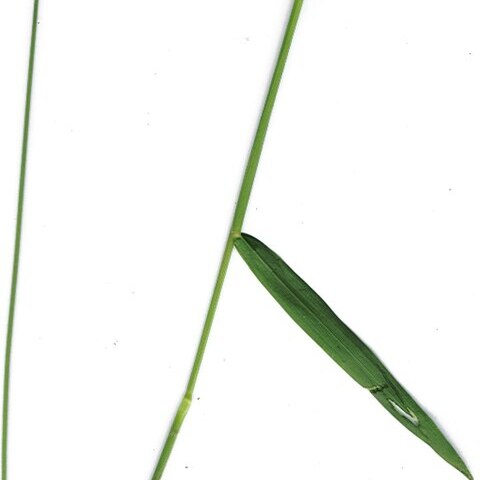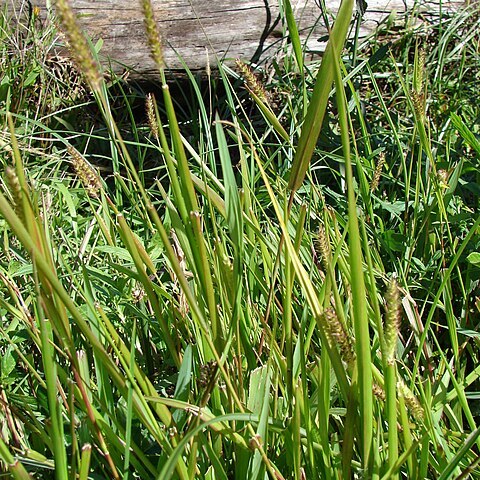Annuals or perennials. Leaf-blades narrowly lanceolate to convolute; ligule membranous, often very short. Inflorescence typically a dense spiciform panicle, rarely open. Spikelets oblong to lanceolate, asymmetrical; glumes herbaceous to membranous, prominently nerved, the lower mostly shorter than the spikelet, the upper gibbous and as long as the spikelet; lower floret ♂ or barren, its lemma resembling the upper glume but less gibbous, with or without a palea; upper lemma usually shorter than the spikelet, thinly coriaceous, smooth, gibbous, not crested, the margins inrolled and clasping only the edges of the palea. Caryopsis obliquely ellipsoid.
Spikelets with one perfect terminal fl, lanceolate, awnless, pedicellate, aggregated into a slender spiciform panicle; first glume short, triangular, 3-veined; second glume strongly saccate at base, sharply 11–13-veined; sterile lemma equaling the second glume, flat, 5-veined, the outer veins approximate in pairs near the margin, its palea nearly as long and often subtending a staminate fl; fertile lemma much shorter, short-stipitate, chartaceous, with involute margins clasping the margins (but not the tip) of the similar-textured palea.
Spikelets oblong-conic; first glume acute, 3-to 5-nerved, small to half as long as the spikelet; second glume broad, inflated-saccate, strongly many-nerved; sterile lemma narrower, flat, usually 5-nerved, the palea well developed and often enclos-ing a staminate flower; fruit much smaller than the spikelet, very short-stipitate, chartaceous-indurate, the margins inrolled, the palea free at the summit. Erect or decumbent spreading annuals or perennials of wet soil, with linear blades and usually dense elongate spike-like panicles.
Superior lemma dorsally compressed, thinly coriaceous to cartilaginous, with flat or involute but never hyaline margins, the floret readily deciduous.
Glumes prominently ribbed, the inferior 1/3–3/4 length of spikelet (shorter in species 1–3), the superior equalling spikelet and gibbous.
Spikelets laterally (S. africana, S. interrupta dorsally) compressed, asymmetrical.
Inferior lemma resembling superior glume but less gibbous.
Inflorescence a dense spiciform panicle, rarely open.


